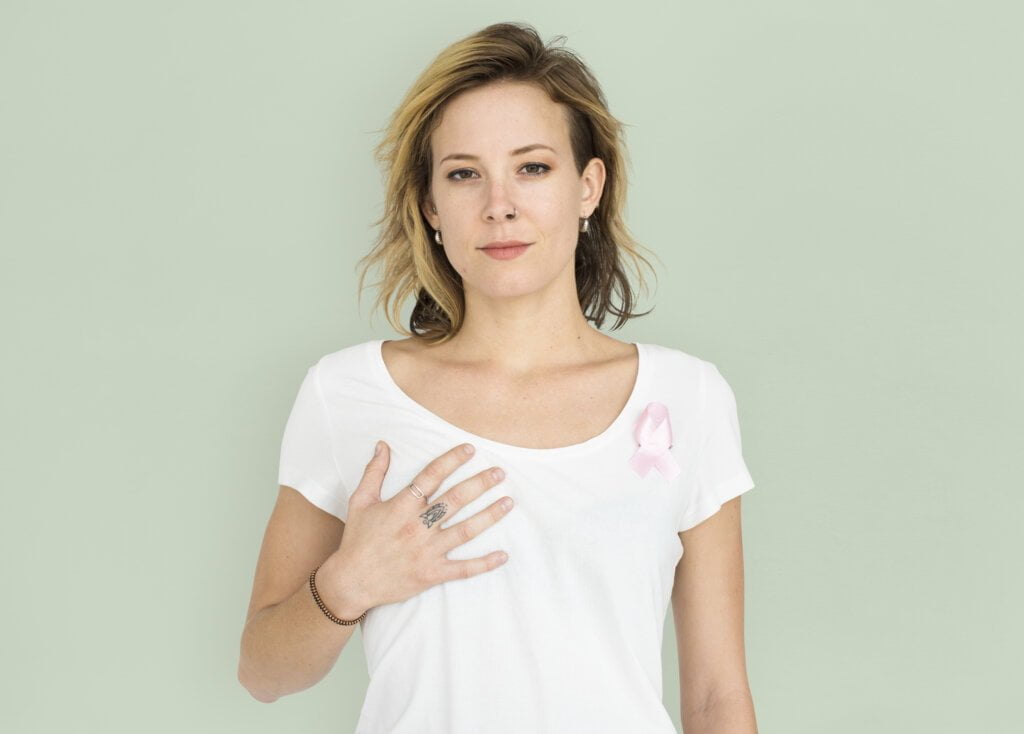Table of Contents
Knowing Breast Cancer: Signs, Causes, and Available Treatments

For women worldwide, breast cancer is a major health concern. It’s essential to understand this disease, from its causes to its symptoms and treatment options, to improve early detection and enhance the chances of successful treatment. In this comprehensive guide, we will explore breast cancer in a human tone, breaking down the complex medical jargon and providing you with the knowledge you need to be well-informed and proactive about your breast health.
Section 1: What is Breast Cancer?
One kind of cancer that starts in the breast cells is called breast cancer. Though it can happen to men as well, women experience it significantly more frequently. Understanding the basics of breast cancer is crucial, so let’s start with its primary causes.
Section 2: Causes of Breast Cancer
cancer is a complex disease with multiple risk factors, and it often occurs due to a combination of these factors. The following are a few of the important causes:
Genetics- Family history of breast cancer, especially if a close relative like a mother or sister has had it, can increase your risk.
Most breast cancers are diagnosed in women over the age of 50.
Hormones: Exposure to hormones like estrogen and progesterone can impact the development of breast cancer. This is why early menstruation, late menopause, and hormone replacement therapy can be risk factors.
Lifestyle Factors: Obesity, a diet high in fat, and excessive alcohol consumption can all contribute to an increased risk of breast cancer.
Environmental Factors: Prolonged exposure to radiation and certain environmental pollutants may play a role in breast cancer development.
It’s important to note that having one or more risk factors doesn’t guarantee you’ll get breast cancer, and many women with breast cancer have no known risk factors.
Section 3: Symptoms of Breast Cancerr
Knowing the symptoms of breast cancer is critical for early detection. The following are typical indicators to be aware of:
Breast Lump: A painless, hard mass in the breast is often the first sign of breast cancer. Not every breast bump, though, is malignant Changes in Breast Size or Shape: Look out for any unexplained changes in the size or shape of your breast.
Breast Pain: While most breast cancers are painless, some may cause tenderness or discomfort.
Skin Changes: This can include redness, dimpling, or the appearance of an orange peel texture on the skin.
Nipple Changes: Keep an eye out for changes in the nipple, such as inversion or discharge.
It’s crucial to understand that these symptoms are not exclusive to breast cancer and can also be caused by various benign conditions. However, if you notice any of these changes, it’s essential to consult a healthcare professional for a proper evaluation.
Section 4: Early Detection and Diagnosis
The likelihood of a favorable outcome from breast cancer treatment is greatly increased by early identification. There are two main methods for early detection:
Mammograms: These are X-ray images of the breast that can reveal abnormalities, even before symptoms develop. Mammograms should be scheduled on a regular basis, particularly for women over 40.
Breast Self-Exams: Self-exams involve checking your breasts for any changes in size, shape, or texture. It’s a good practice for all women to be familiar with their bodies.
Section 5: Types and Stages of Breast Cancer
Breast cancer can vary in type and stage, which affects treatment and prognosis Among the most common forms of breast cancer are:
Ductal Carcinoma In Situ (DCIS): This is the earliest stage of breast cancer and is non-invasive. It’s confined to the milk ducts.
Invasive Ductal Carcinoma (IDC): This is the most common type of breast cancer, where cancer cells break through the duct wall and invade nearby tissues.
Invasive Lobular Carcinoma (ILC): This type starts in the milk-producing glands and can spread to other parts of the body.
Inflammatory Breast Cancer: This is a rare and aggressive form of breast cancer characterized by redness and swelling of the breast.
Triple-negative breast cancer is more difficult to treat since it lacks HER2 receptors, progesterone, and estrogen.
Understanding the type and stage of breast cancer is crucial for determining the most appropriate treatment plan.
Section 6: Treatment Options
Breast cancer treatment varies based on the type and stage of the cancer, as well as individual factors. Common treatment options include:
Surgery: Surgical options range from breast-conserving surgery (lumpectomy) to mastectomy, depending on the extent of cancer.
Radiation Therapy: This involves using high-energy X-rays to destroy cancer cells. It’s frequently utilized to eradicate any cancer cells that remained after surgery.
Chemotherapy: Medications are used to kill cancer cells or stop their growth and can be administered orally or intravenously.
Hormone Therapy: This is used to block hormones like estrogen that can fuel the growth of certain types of breast cancer.
Targeted Therapy: These drugs specifically target certain molecules involved in cancer growth and progression.
Immunotherapy: This emerging treatment harnesses the body’s immune system to target and destroy cancer cells.
Section 7: Emotional and Psychological Support
A breast cancer diagnosis is not only a physical challenge but also an emotional one. It’s essential to seek emotional support from loved ones and consider joining support groups or seeking therapy to help cope with the emotional aspects of the disease.
Section 8: Conclusion

Breast cancer is a significant health concern, but with the right knowledge and proactive measures, it can be detected and treated effectively. Regular screenings, early detection, and advances in treatment options have improved the outlook for those diagnosed with breast cancer.
Remember, you are not alone in this journey. Reach out to healthcare professionals, support groups, and your loved ones for guidance and support. By understanding the causes, symptoms, and treatment options for breast cancer, you can take control of your health and make informed decisions to improve your chances of a successful outcome.
FAQs
Q1: What is breast cancer?
A1: cancer is a type of cancer that originates in the cells of the breast Though it is more common in women, it can affect men as well.
Q2: What are the common causes of breast cancer?
A2: The causes of breast cancer can be multifactorial, but they often include genetics, hormonal factors, age, lifestyle, and environmental factors.
Q3: What are the symptoms of breast cancer?
A3: Common symptoms include the presence of a breast lump, changes in breast size or shape, breast pain, skin changes on the breast, and nipple changes. It’s essential to note that these symptoms can also be caused by non-cancerous conditions.
Q4: How can I perform a breast self-exam?
A4: You can perform a breast self-exam by visually inspecting your breasts and feeling for any lumps or changes in texture. It’s recommended to do this regularly and report any unusual findings to a healthcare professional.
Q5: What are the early detection methods for breast cancer?
A5: Early detection methods include mammograms, which are X-ray screenings of the breast, and breast self-exams. Mammograms should be scheduled on a regular basis, particularly for women over 40.
Q6: What are the different types and stages of breast cancer?
A6: The main types of breast cancer include Ductal Carcinoma In Situ (DCIS), Invasive Ductal Carcinoma (IDC), Invasive Lobular Carcinoma (ILC), Inflammatory Breast Cancer, and Triple-Negative Breast Cancer. Stages range from 0 (in situ) to IV (advanced), depending on the extent of the cancer’s spread.

